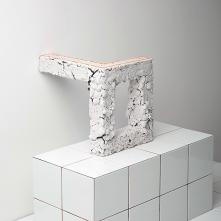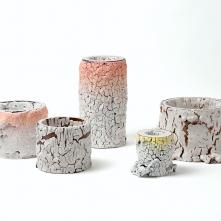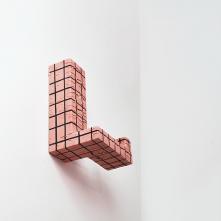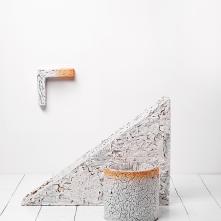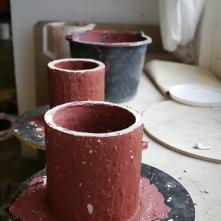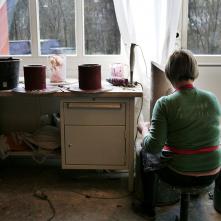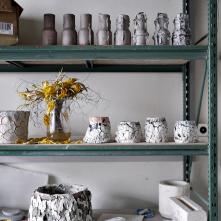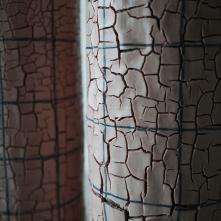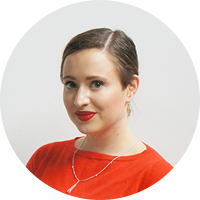
Boursier:
2017
Site Internet:
My relationship with art was formed in my early childhood: nearly every week from the age of five I frequented the Hermitage Museum where I took a Lecture Programme course studying the history of art of the past. Until now prehistoric and Northern Renaissance museum rooms are my favourite places to think about new work.
A strong influence also exists within my practice reflecting my classical gymnasium education: learning antique languages lead to keenness on the context of everyday objects of an ancient past, the architecture and culture that they accompanied. I try to see myself as a maker with similar sensibilities to those of craftsmen and artists of bygone eras.
In my practice I evade tacking any narrative to my work, letting myself work intuitively using my aesthetic preferences and tacit knowledge.
In my work I animate minimalist constructivist architectural forms. I seek to avoid direct, narrow, or exact images or symbols. I base my artwork on poly-cultural signs, such as architectural details, everyday and ritual objects. I come to them through research on various cultures and always bear in mind their reflection on my own reality, my everyday life. This way every artwork has a personal meaning for me, but I prefer it to be a more ambiguous experience for the viewer, leaving open the possibility of variability in the interpretation of the work.
I create visions of ageing of the architecture, where every peeling layer of surface gives a context to a history and time. In order to do so I choose purely material language of ceramics, as possible behaviours of ceramic material are very diverse. For this reason, I avoid constructing narrative projections in my work, preferring to use laconic shapes and let the nature of the material itself create its own narrative and identity that the viewer unconsciously relates to.
My latest works were inspired by a wistful longing for the post-soviet times: the subtle dilapidation of stark unadorned constructivist forms which over time have become eased and animated by their peeling layers that resemble tree bark. These soviet structures once bold and futuristic and built with uncompromising visual grammar, have through neglect and decay become lyrical.
Témoignage:
My time at the Bruckner Foundation was an exceptional experience that happened at the perfect time for me. I am sure, like me, every artist in a modern-day life can find themselves overwhelmed with the daily routines, usual studio practices, it can dull the creativity. For this reason my residency at te Bruckner Foundation was like a breath of fresh air: beautiful new studio, fantastic people, new materials, no pressure, freedom of creation and experimentation. I finally had time to focus fully on my practice, try various material experiments without the pressure of creating final objects, gather my thoughts and think of new projects.
As well as that it was an amazing opportunity to finish my large-scale installation for the Faenza Prize, as I was nominated to exhibit there: it was wonderful to have enough studio space and wonderful kilns and equipment to do so.
I think overall this residencie's huge advantage is that it is very flexible: one can focus on a new projects, as sometimes it is hard to start something new in one's usual environment; or finalize something that has begun prior to the residency, or anything else an artist wants it to be. It is very a special opportunity.

